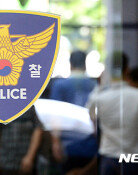G7 leaders visit Japan’s holy site
G7 leaders visit Japan’s holy site
Posted May. 27, 2016 08:12,
Updated May. 27, 2016 08:17
Japan’s indigenous belief, the root of Shinto religion, has it that everything has its own god. In ancient Japanese mythology, there is even an expression of “eight million gods.” Ancient Japanese people first considered nature as their god, but the trend of ancestral worship spread over time. Japan has more than 80,000 Shinto shrines registered as religious entities. Shrines that honor gods related with the royal family are called Jingu and receive special treatment.
The Ise Jingu in the city of Ise, Mie Prefecture is one of Japan's holiest sites that is dedicated to the sun goddess Amaterasu Omikami, considered the deity of the ancestors of the royal family. The shrine houses the “Sacred Mirror,” one of the three Imperial Regalia of Japan. Together with Mt. Fuji, the sanctuary is in the bucket lists of most Japanese people. Although it is also called the “holy site of the conservatives,” six million to 10 million people visit the shrine.
After the 1868 Meiji Restoration, Japan introduced the State Shinto system, putting the Ise Jingu at the apex of Shinto shrines. Together with the Meiji Jingu and the Yasukuni Shrine in Tokyo, the Ise Jingu played the spiritual role of strengthening Emperor worship. The Chosen Jingu, which was built on Seoul’s Mt. Namsan during Japan’s colonial rule of Korea, was also dedicated to Amaterasu and King Meiji. After Japan’s defeat in World War II, the State Shintoism was abolished under the principle of separation between religion and politics. Still, the Ise Jingu is so symbolic of the Japanese spirit that Japan's prime minister make it a practice to visit the shrine at the beginning of every year.
G7 leaders, including U.S. President Barack Obama, visited the Ise Jingu on Thursday after the G7 summit. Although the visit was not religious, the fact that world leaders visited the site in a group has created significant ripple effects and controversies. Although the shrine is different in nature from the Yasukuni Shrine, which honors Class-A war criminals, South Korea and China find the visit unpleasant because they were victims of Japan’s aggression. In addition to the G7 visit to the Ise Jingu, Japanese Prime Minister Shinzo Abe has successfully arranged Obama’s visit to Hiroshima, a site of the U.S. atomic bombing, promoting his leadership and strengthening his political standing.







